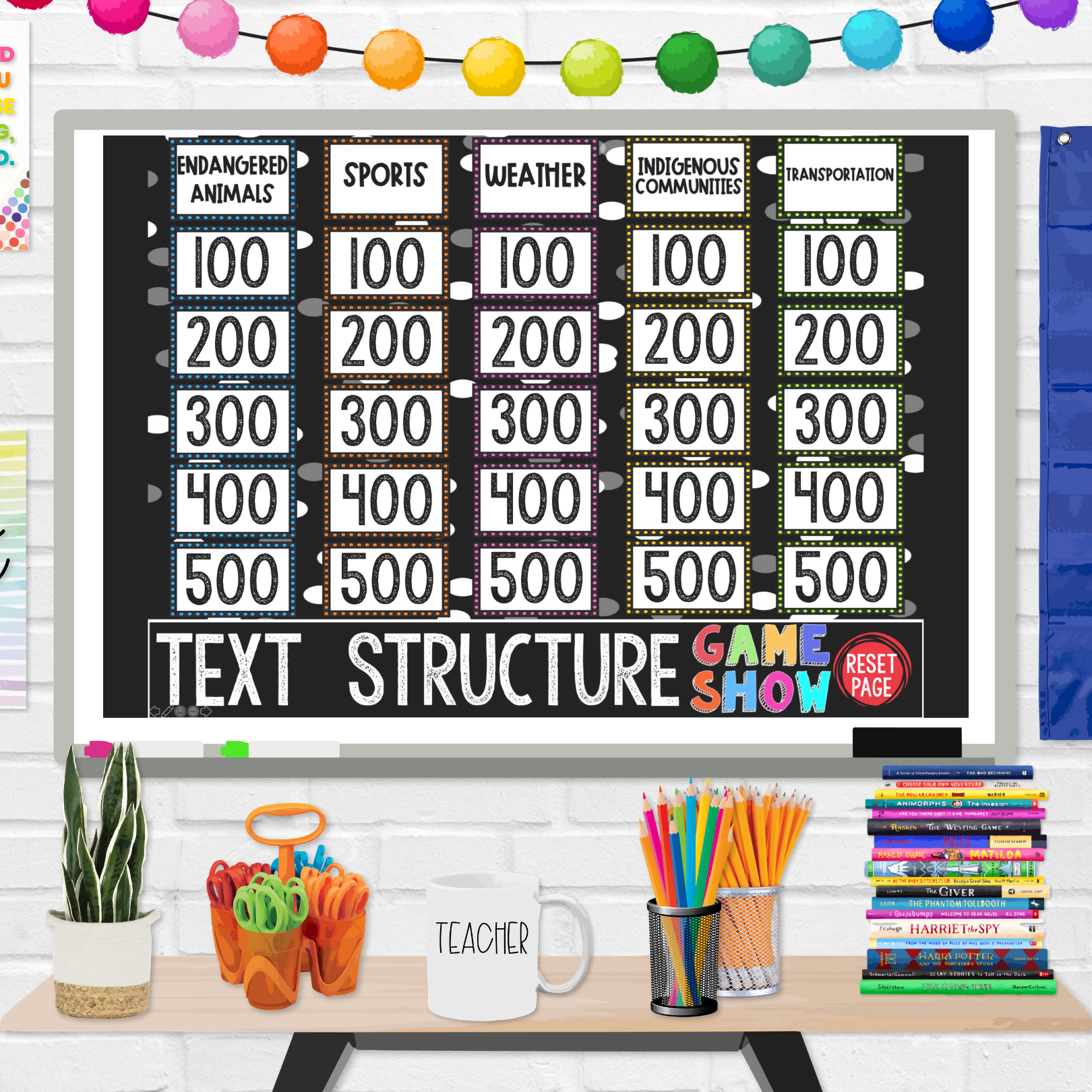Learning text structures helps students begin the process of analyzing information and questioning the purpose of the texts they read. As students get older, knowing their text structures allows them to determine the goal of the writer and decide whether a text is appropriate for their tasks. (i.e., a research project or essay).
Teaching text structures can be difficult, but with the right tools, you can conquer this skill this year in your upper elementary class.
If you love the information in this post and you want to combine all of these hacks together into one informational resource, check out the Nonfiction Text Structures Flipbook. This flipbook acts as an introduction to text structure with examples!
What are the common forms of Text Structure?
5 Common Text Structure Forms:
- Cause and Effect: tells what happened and why it happened.
- Compare and Contrast: discusses similarities and differences between two or more subjects
- Order and Sequence: provides details of events in the order in which they happened.
- Problem and Solution: provides details about an issue and offers ways to solve it.
- Description: provides many details or characteristics on a specific topic.
Although writers may use variations or combinations of these structures, most texts are rooted in one of these five basic text structures. Writers use these structures to send messages to their audiences.
Why is Text Structure Important?
Teaching text structure helps students identify why a person is communicating the message. Are they trying to describe something new? Are they providing instructions through order and sequence? Are they trying to convince us to do something by providing cause-and-effect examples or using problems and solutions?
Understanding why a person is sending a message and what types of evidence or details they are using to send the message helps students begin to discern that every text has a purpose and often a bias. Teaching students text structure is teaching them the basic cornerstones of analysis. They will continue to expand on these skills in the years to come.
Text Structure Teaching Hacks
We want students to be able to quickly identify text structures and think deeply about them. With this in mind, we will want to make sure that they experience text structures in a variety of ways. As you prepare to teach text structures this year, take a moment to consider all the different ways text structures can be taught and learned.
Clue Words
Use clue words to teach students what types of words to look for. Each text structure has terms that typically align with the use of that text structure. Check out the image below to learn more about the clue words associated with each text structure.

Visual Cues
As always, we are always trying to teach content with different learning styles in mind. For strong visual learners using and creating visual cues for each text structure could help them internalize the differences between the text structures more fully. This is a visual cue that I use for problem/solution text structures.

You don’t have to come up with these all by yourself. Get your students involved. Teach them about text structures, and then challenge them to create new visual cues for your classroom.
We have two resources that include visual cues as a way of helping students learn text structures. The visual cues are taught while students create their Text Structures Flipbooks and then practiced in our Nonfiction Text Structures U-KNOW game.
Example Passages
Use sample texts for students to study deeply. Aim to have sample passages on the same topic so that students can dig deeply into the passage. For example, in my Text Structures Flip Book, all the sample passages are about ice cream. Using the same subject to discuss different structures helps students dig into the deeper nuances and differences between the passages and the goals of the writers. Students also begin to see how a single topic can be discussed in more than one way.
Check out the sample selections from the flipbook below to get a better look at how I have kept the subject similar but changed the text structure.
Frozen Yogurt or Ice Cream (Excerpt)
Ice cream is a frozen dessert made with milk and cream along with added flavors. Frozen yogurt is also a dessert that uses yogurt instead of cream, which makes it more tart than ice cream. Ice cream and frozen yogurt are alike because both can be served in a cone or a dish. Another similarity between them is they can be served with a variety of toppings…
Common Homemade Ice Cream Issues (Excerpt)
Making your own ice cream at home is simple, but there are some common issues that could arise. One problem common with homemade ice cream is that your ice cream can be crunchy or icy. There’s an easy solution, though. Just use a frozen bowl and get the ice cream to freeze as quickly as possible…
Another activity that uses passages with the same subject to identify text structures is the Text Structures Game Show Level 2. Check it out here! If you’re looking for a more introductory game with definitions and clue words, try Level 1.
Games
Use games to reinforce students’ knowledge of text structures. Begin by having students work in partners or groups on the questions, and then start integrating the questions and passages into centers and other activities for students to practice individually. Check out the games below. All of these resources are available today as digital downloads in the Fun in 5th Grade Store!
Do you have other great ways of teaching text structure? Let us know in the comments below.











